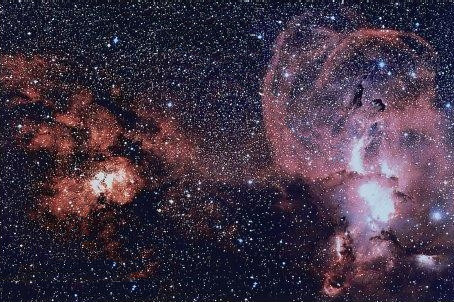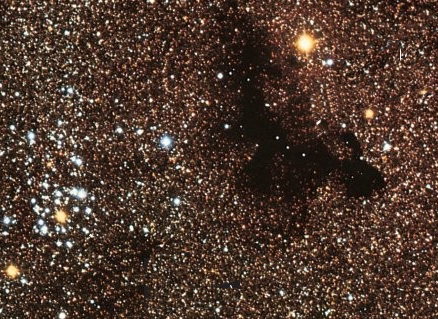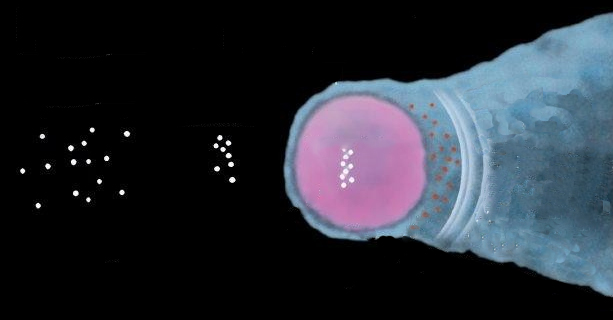Chapter 1. Nebulae and Protostars
Map Learning Exercises
Question 1 of 5
Nebulae and Protostars
Which nebulae is most reddened by interstellar dust?
This photo shows two nebulae. These nebula are emitting the same kind of light, but they do not look the same as seen in visible light. Click on the nebula that is MOST blocked from view by the presence of interstellar dust.
{"title":"selection","description":"The light from this nebula has been greatly \"reddened\" by interstellar dust. This is much like the way that dust in our atmosphere can make a sunset sky turn red. (Please note that this \"reddening\" is NOT related to the colors of the stars in the nebula, or the motion of this nebula in relationship to Earth.)","type":"correct","color":"#ffffff","code":"[{\"shape\":\"circle\",\"coords\":\"117,181,65\"}]"} {"title":"selection COPY","description":"Incorrect","type":"incorrect","color":"#ffffff","code":"[{\"shape\":\"circle\",\"coords\":\"371,172,64\"}]"}Correct.
Please try again.


